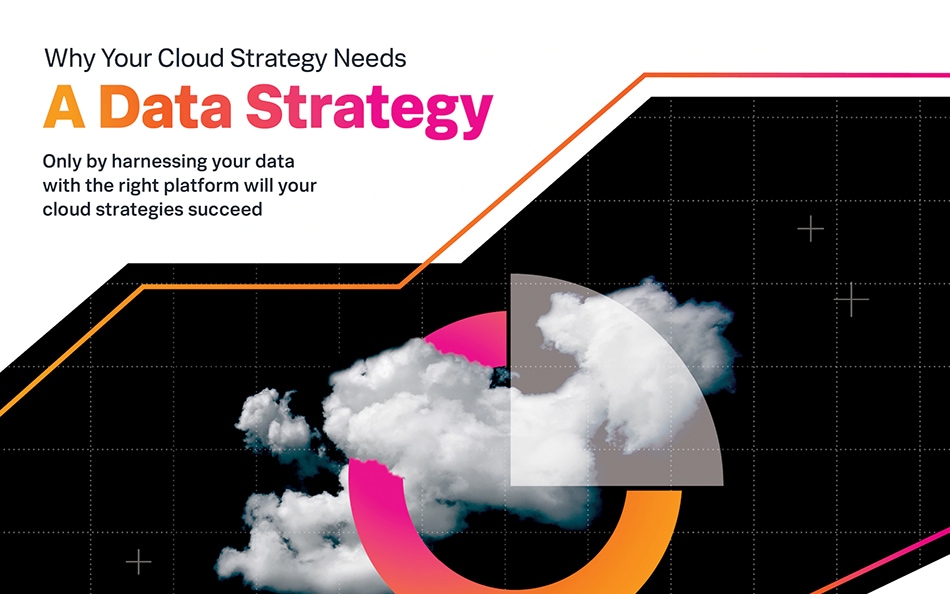What Is Hybrid Cloud? Trends, Benefits, and Best Practices

Over the past decade, businesses have realized that relying solely on their data centers has limitations. That’s why 38% of organizations turned to private clouds in 2024 to control their data. However, as the need for more flexibility and scalability grew, they started integrating public cloud services.
In this article, we’ll explore hybrid cloud computing, what it is, how it works, and why it’s a hot future trend for businesses.
What is a hybrid cloud?
A hybrid cloud is a computing environment that combines a private cloud (on-premises infrastructure) with a public cloud so data and applications can be shared between them for greater flexibility and scalability.
By combining public and private cloud environments, organizations can run applications and store data across multiple platforms with a cloud hybrid approach. 50% of organizations were able to optimize costs across on-prem/public cloud resources because of shifting to a hybrid environment, and 45% increased IT capacity without additional capital expenses.
This cost saving is one of the major reasons why the global hybrid cloud market is expected to reach $262 billion by 2027.
Hybrid cloud vs multi cloud
Many people confuse hybrid cloud with multi-cloud, but they are not the same. Here’s why:
- A hybrid cloud setup integrates a private cloud with a public cloud, allowing them to work together as one system.
- In contrast, a multi-cloud approach uses two or more public cloud providers, but they don’t have to be connected or work as one system.
This distinction is crucial for businesses as they strategize their cloud computing solutions.
Main components of hybrid cloud architecture
A hybrid cloud gives us flexibility and control to run workloads where they make the most sense. But let’s see what core components make up this entire environment:
Public cloud
Public cloud is built and managed by external providers like AWS, Azure, or Google Cloud. In a hybrid cloud setup, it extends our existing on-prem or private cloud systems.
This is quite helpful when we need more capacity and want to scale quickly. We only pay for what we use and can get resources quickly without managing the hardware.
Private cloud
Unlike the public cloud, a private cloud is dedicated to our organization only, running in our own data center or hosted by a provider. It gives us more control and is usually where we run critical or sensitive workloads that need to meet strict security or compliance requirements.
Network connectivity
To connect public and private cloud environments, a hybrid cloud uses strong and secure network connections. This is either done through VPNs, direct links, or SD-WAN.
Orchestration and management tools
In a hybrid cloud environment, we work with different systems all at once — on-prem, private cloud, and public cloud. This multi-cloud management is a top challenge for more than 70% of enterprises. That’s why we use orchestration and management tools.
These tools use Kubernetes to automate key tasks such as:
- Provisioning resources
- Scaling applications
- Monitoring systems
- Handling security
As a result, we can make smart decisions about where to run each workload.
For example, if something is sensitive and needs to stay in a private cloud, or if something needs to scale quickly and cheaply in the public cloud, these tools automatically place workloads based on our set rules.
(Related reading: automation vs. orchestration.)
Security and compliance tools
Security is a top concern. In 2024, 73% to 74% of organizations experienced phishing attacks in their cloud environments. So, to strengthen security, a hybrid cloud setup must use tools that apply the same policies across all environments. This reduces security gaps across the cloud and makes sure we meet regulatory requirements to avoid hefty penalties.
Why it’s worth implementing hybrid cloud solutions
More than 77% of businesses had adopted the hybrid cloud approach in 2022. Here's why it’s worth considering for your organization, too:
- Scalability. The hybrid cloud is scalable, which means we can easily adjust how much computing power or storage we use. If we suddenly need more resources, we can tap into the public cloud without buying new hardware.
- Cost-efficiency. We don’t have to invest in extra servers or infrastructure if demand spikes. We can even shut down extra resources when we no longer need them. This means we only pay for what we use.
- Flexibility. A hybrid cloud allows us to run different parts of our business in the environment that works best for us. For example, we can keep sensitive data in a private cloud.
- Disaster recovery. In case of a cyberattack or even a natural disaster, our data and apps aren’t stuck in one place with a hybrid cloud. We can back things up in the cloud and recover quickly without losing important information or time.
- Choice and freedom. We can use different cloud services based on what each one does best, and switch things up as our needs change. That gives us more negotiating power and freedom to choose what’s right for our business.
Challenges and considerations in hybrid cloud adoption
While hybrid cloud offers many benefits, it also comes with challenges that must be planned for.
Complexity
Managing a hybrid environment means handling both on-premises infrastructure and cloud platforms at the same time. This requires careful coordination, consistent configurations, and the right tools to monitor everything across both environments. Without proper management, things can quickly become disorganized and inefficient.
Cloud security risks
When data moves between private and public clouds, there’s a higher chance of exposure if the right security measures are not applied. The 2021 Cognyte data leak exposed 5 billion records because of misconfigured cloud storage buckets during data transfers. It included sensitive customer details that were exposed. This shows how poor access controls during cloud transfers can lead to leaks.
We need strong security policies and tools like encryption and identity management systems to reduce these risks and keep data safe.
Cloud compliance
Different industries have their own rules for how data should be handled. As a result, staying compliant in a hybrid cloud setup can get tricky because our data is spread out. So, make sure to implement the proper regulations and pick cloud providers that support those rules.
In fact, regular checks and automated tools can make it easier to stay compliant with policies like GDPR, HIPAA, or PCI-DSS.
How to implement a hybrid cloud
Now, if you ever plan to move to a hybrid cloud setup, here’s a simple breakdown of how to make it happen, step by step:
Step 1: Define clear business goals
Before touching any tech, clarify what you're trying to achieve. Is it saving costs, boosting performance, improving security, or all of the above? Once you know your goals, you can decide which workloads belong in the public cloud and which should stay private.
Step 2: Evaluate your infrastructure
Take a good look at what you already have.
- Which systems are cloud-ready?
- Which ones need to stay on-prem for compliance or performance reasons?
- What may need an upgrade?
When we know this upfront, we avoid wasting time or budget on moving things that shouldn't move.
Step 3: Design the architecture
Map out how your public and private cloud environments will work together. What lives where? How will apps and data move between them?
Think about communication, compatibility, and resilience. The more detail we have at this stage, the fewer unwanted surprises we will face later.
Step 4: Build security
Security isn’t something to bolt on later. Use encryption, access controls, and automation from day one to protect everything. A zero-trust model, where no user or device is automatically trusted, can help reduce risk. Make sure your setup meets any regulatory requirements, too.
Step 5: Use management tools
Running workloads across multiple environments means more to track. Choose tools that let you see and control everything, including performance, usage, and costs across both cloud and on-prem systems.
Step 6: Plan workload migration
Not everything has to move at once. Start with low-risk systems, test, and scale from there. Depending on your setup, you can lift and shift, refactor, or rebuild for cloud efficiency. There’s no one-size-fits-all; do what works best for you.
Step 7: Define data governance
Establish clear rules for where data lives, who can access it, and how it’s handled. This avoids inconsistency and reduces security risk.
(Related reading: data governance.)
Step 8: Optimize cost and resources
Monitor spending and usage regularly. The beauty of the hybrid cloud is flexibility, but it’s easy to overspend if you're not watching closely. So, review resources often and scale things to fit real needs.
(Related reading: cloud computing costs.)
Step 9: Continuously monitor and improve
A hybrid cloud setup evolves. That’s why we must keep track of performance, costs, and usage patterns, and don’t be afraid to tweak things as you learn. The best setups grow with our business, not ahead of or behind it.
The future of hybrid cloud computing
The hybrid cloud market is growing rapidly, from $85.3 billion in 2021 to an expected $262 billion by 2027, with a 20.6% annual growth rate. The Asia Pacific region is driving much of this growth, with businesses adopting hybrid cloud to support digitalization.
Some major companies are making strategic moves to strengthen their hybrid cloud capabilities. IBM’s $6.4 billion acquisition of HashiCorp aims to improve its ability to manage complex multi-cloud environments, while Lenovo has turned its internal hybrid cloud platform into a market-ready product as a response to growing demand for scalable cloud solutions.
AI is playing a prominent role in this evolution. Companies like NetApp are integrating AI into their hybrid cloud offerings, such as the NetApp AIPod, to optimize AI workloads. This integration will improve data management and workload performance, which are quite essential for businesses that rely on AI-driven insights.
Gartner predicts 90% of organizations will adopt hybrid cloud by 2027. However, as this shift occurs, we will also face new challenges. One of the most urgent AI hurdles predicted by Gartner in the coming years is the need for effective data synchronization across hybrid cloud environments.
Hybrid cloud is the next big thing
Hybrid cloud is a sign of how IT is changing. It gives us the flexibility to grow and the control to stay secure. As the tech keeps improving, hybrid setups will become more seamless and powerful.
Even if your organization is just starting or already on the journey, now’s the time to build a cloud strategy that works for today and tomorrow.
See an error or have a suggestion? Please let us know by emailing splunkblogs@cisco.com.
This posting does not necessarily represent Splunk's position, strategies or opinion.
Related Articles
About Splunk
The world’s leading organizations rely on Splunk, a Cisco company, to continuously strengthen digital resilience with our unified security and observability platform, powered by industry-leading AI.
Our customers trust Splunk’s award-winning security and observability solutions to secure and improve the reliability of their complex digital environments, at any scale.


